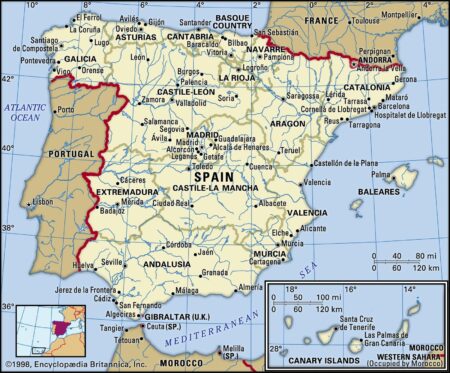In recent weeks,China’s naval drill in the South China Sea has garnered meaningful international attention,particularly from Australia and New Zealand. The extensive military exercises, which involve a range of naval maneuvers and live-fire scenarios, have prompted a cautious response from both nations, reflecting growing concerns over regional security and maritime stability. As Beijing continues to expand its military capabilities and assert its presence in contested waters, Australia and New Zealand find themselves navigating a complex diplomatic landscape, balancing their economic ties with China against the need to uphold international law and promote safety in a vital trade route.This article explores the implications of China’s naval activities and the strategic recalibrations underway in Oceania as these two nations respond to a rapidly evolving geopolitical climate.
Chinas Growing Naval Capabilities Prompt Strategic Reassessment in Australia and new Zealand

As China amplifies its naval exercises, analysts are urging Australia and New Zealand to recalibrate their security strategies. The scale and sophistication of these drills have raised eyebrows in the Pacific, compelling regional powers to rethink their defense postures.Key considerations include:
- Increased Military Investment: both nations may need to enhance their naval capabilities to counterbalance China’s assertive maritime strategies.
- Strengthened Alliances: Partnerships with the United States and other allies are being emphasized to deter potential threats.
- Intelligence Sharing: Improved collaboration on surveillance and reconnaissance is crucial for real-time assessments of Chinese naval movements.
The geopolitical implications are evident as Australia and New Zealand revisit their defense policies amid shifting power dynamics in the Indo-Pacific. Recent statements from military leaders stress the urgency of adapting to a rapidly evolving regional landscape.A focus on investment in contemporary naval technologies and enhancing interoperability with allied forces could shape the future landscape of naval operations. Consider the following table highlighting key comparisons between naval capabilities:
| Country | Current Naval vessels | Future Procurement plans |
|---|---|---|
| Australia | 50+ | New frigate Class by 2025 |
| new Zealand | 15+ | Upgrades to Anzac Class by 2028 |
Regional Security Concerns Rise as Naval Exercises signal Potential Shifts in Power Dynamics

As naval exercises in the region intensify, Australia and New Zealand have found themselves closely monitoring China’s military maneuvers. These drills, characterized by their scale and complexity, raise questions about shifting power dynamics in the Indo-Pacific. Both nations have approached the situation with caution,recognizing the implications for regional security and the need for a coordinated response. Key elements of concern include:
- Increased Military Presence: The frequency and scope of China’s naval drills may signal a more assertive stance in territorial waters.
- International Partnerships: Australia and New Zealand have indicated a potential increase in joint military exercises with allies to counterbalance China’s influence.
- Economic Vulnerability: The region’s economic stability is intertwined with its security environment, prompting new discussions on trade and defense.
In light of these developments, analysts are urging for enhanced dialog among regional players. To facilitate this, a summit among ASEAN countries is being proposed to address rising tensions and foster collaboration. Here’s a snapshot of key nations’ positions:
| Country | Response to Naval Drills | Defense Initiatives |
|---|---|---|
| australia | Cautious observation | Increased military spending |
| New Zealand | Support for diplomatic measures | Strengthening Pacific alliances |
| United States | Reaffirmation of commitments | Joint training exercises |
Diplomatic engagements Needed to Mitigate Tensions Amid Increased Military Activity

Considering recent naval drills conducted by China, Australia and New Zealand are urged to engage in proactive diplomatic measures to address the increasing military activities in the region. The growing militarization poses a challenge not only to regional peace but also to international stability. It is crucial for both nations to emphasize dialogue and cooperation to avert potential misunderstandings and conflicts. Key priorities for diplomatic engagements should include:
- Establishing Communication channels: Regular dialogues between military and diplomatic representatives can foster mutual understanding.
- Joint Exercises: Collaborative military drills can build trust and demonstrate a commitment to peace.
- Regional Security Frameworks: Engaging in multilateral discussions with neighboring nations to outline shared security interests.
The response from Australia and New Zealand reflects wider strategic concerns among Pacific nations, emphasizing the necessity of concerted efforts to mitigate escalation. To support these efforts, a table outlining recent military activities and planned diplomatic engagements can provide clarity on the current landscape:
| Country | Military Activity | Diplomatic Engagement |
|---|---|---|
| China | Naval Drills in the South China sea | Open channels for dialogue with ASEAN nations |
| Australia | Increased maritime patrols | Hosting security forums in Canberra |
| New Zealand | Participating in joint maritime operations | Engaging in discussions with Pacific Islands Forum |
Recommendations for Strengthening Maritime Cooperation and Defense readiness in the Asia-Pacific

To enhance maritime cooperation and defense readiness in the Asia-Pacific region,a multi-faceted approach is essential. Key stakeholders should prioritize bilateral and multilateral defense agreements that foster transparency and facilitate joint exercises among nations. This includes:
- Establishing regular joint naval drills to improve interoperability among regional forces.
- Creating dedicated communication channels to ensure swift facts sharing during maritime incidents.
- Investing in infrastructure that supports collaborative training and resource sharing.
Additionally,it is indeed crucial to engage in strategic dialogues that include not only defense policies but also the meaning of ecological sustainability in maritime operations. Effective measures can be strengthened by:
- Implementing environmentally kind practices in maritime activities to preserve marine ecosystems.
- Encouraging participation from non-military stakeholders, such as environmental organizations, in developing joint maritime strategies.
- promoting educational exchanges on maritime security challenges and environmental threats, creating a well-informed regional community.
The Way Forward
China’s extensive naval drills in the South China Sea have prompted a measured yet concerned response from Australia and New Zealand, reflecting the intricate balance of regional security dynamics. As these nations navigate their diplomatic relationships with Beijing,they are acutely aware of the broader implications for stability in the Indo-Pacific region. The situation underscores the growing importance of multilateral dialogue and cooperation among allies to address emerging security challenges. As both countries continue to monitor developments, their response will likely evolve in tandem with the shifting geopolitical landscape, emphasizing the need for vigilance and strategic foresight in an era marked by rising tensions and military posturing.




